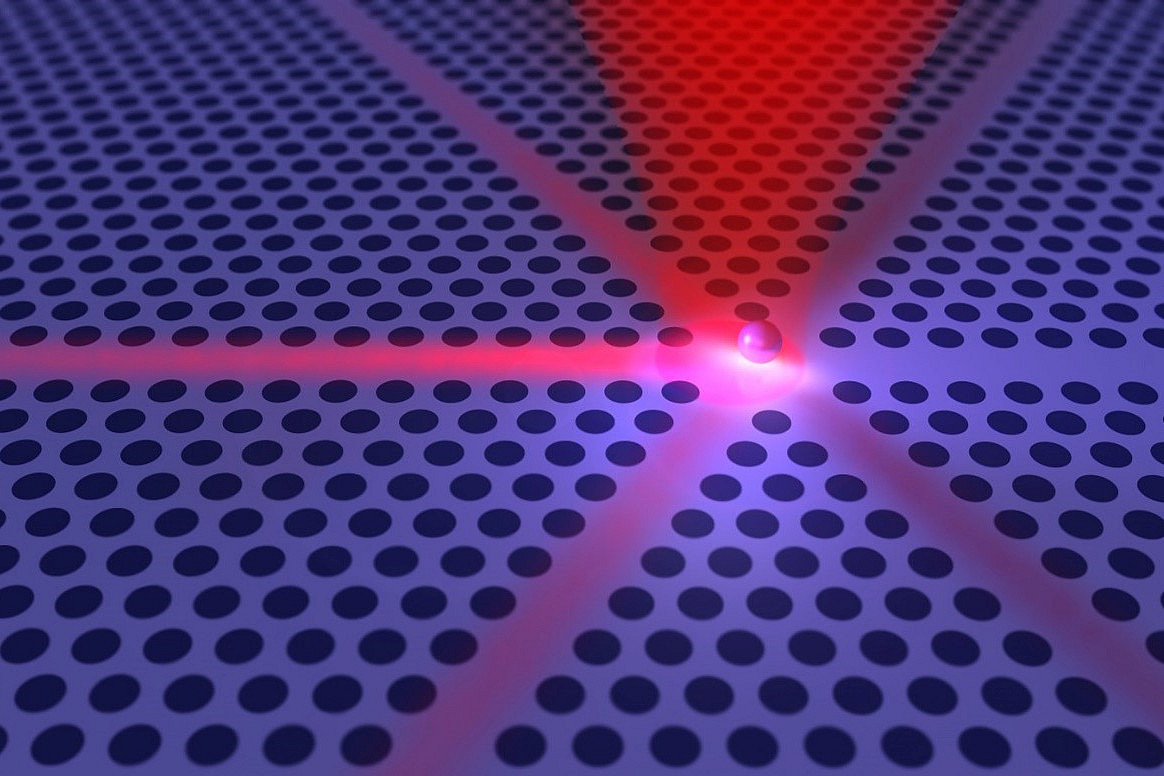Precise localization in general or tracking of nanoparticles and active emitters in particular play a paramount role in various fields of research, including but not limited to super-resolution microscopy, optical manipulation, sensing, and lithography. Over the last two decades, a plethora of exciting and powerful techniques have been implemented and tested.
More recently, a fundamentally different all-optical approach was demonstrated, involving the interaction of structured light with structured matter. In their studies [1,2], the team around Peter Banzer utilized polarization tailored light beams. Before focusing them tightly to nanoscale dimensions, the beams resemble the shape of a doughnut – a direct consequence of radially and azimuthally oriented electric and magnetic field vectors (similar to the spokes or tire of a wheel). In the focal volume, however, complex three-dimensional landscapes of the electromagnetic field are created, with the field vectors now pointing in all possible directions. If a nanoparticle is placed in such a field distribution, its optical interaction will depend on the actual position. The combination of tailored fields and bespoke particle responses allows for imprinting the particle location in the scattering pattern measured far away from the sample. Ideally, a tiny change in particle positon should result in a significant alteration of the far-field distribution. To increase the sensitivity to a particle displacement drastically, the team took advantage of a scattering effect related to an intriguing phenomenon originally introduced by Milton Kerker in 1983 [3]. In its original version, Kerker scattering is a highly directional forward or backward scattering process, resulting directly from interference of electric and magnetic dipole emission. By taking advantage of the three-dimensional focal field patterns created by tight focusing, the team modified the Kerker effect such that a lateral directionality, i.e., orthogonal to the propagation direction of the beam, can be achieved [1,2]. The particle position is imprinted in the strength and sign of the directional scattering. Surprisingly, this rather simple scheme allows for the localization of a nanoparticle with sub-Angström spatial precision (< 0.1nm) [2].
In two recently published articles [4,5], the team elevated this novel scheme to a whole new level. In a nutshell, they showed that this method may not only feature an ultra-high spatial resolution, the particle position can also be tracked at very high speed [4], and without the necessity of using cameras for detection. Furthermore, the footprint of the position sensor can also be reduced drastically by chip-scale photonic integration [5], an important step towards the realization of fully integrated position sensors (see image). From a more general perspective, these studies highlight the fascinating capabilities of structured light-matter interactions at nanoscale spatial dimensions. The underlying optical interaction schemes pave the way for the development of novel methodology and real-world applications in the fields of nanometrology, light steering, and microscopy. These and other aspects are currently investigated in the labs of the new group Optics of Nano and Quantum Materials (Institute of Physics at UniGraz).
This work is part of the European Commission Horizon 2020 research and innovation programme under the Future and Emerging Technologies Open Grant Agreement Super‐Pixels (No. 829116).
[1] M. Neugebauer et al., Polarization-controlled directional scattering for nanoscopic position sensing, Nat. Commun. 7, 11286 (2016)
[2] A. Bag et al., Transverse Kerker scattering for Angström localization of nanoparticles, Phys. Rev. Lett. 121, 193902 (2018)
[3] M. Kerker et al., JOSA 73, 765 (1983)
[4] P. Beck et al., Toward High‐Speed Nanoscopic Particle Tracking via Time‐Resolved Detection of Directional Scattering, Laser Photonics Rev. 14, 2000110 (2020)
[5] A. Bag et al., Towards fully integrated photonic displacement sensors, Nat. Commun. 11, 2915 (2020)
